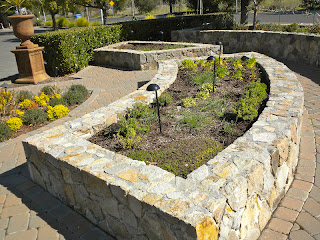 |
| photo by Steven Krause |
"I feel as if we are transporting the land to our guests,"
is one of the ways John describes why the farm project is so important to him.
He muses on what a natural evolution it is to be growing so many of our ingredients:
"The guiding philosophy for us has always been
serving simple food that reflects a sense of place."
This idea of "sense of place" is also referenced
when talking about the concept of Terroir and in fact,
that phrase is the loose translation for the word.
Terroir comes from the French word terre "land"
and was often incorporated into descriptions of wine, coffee or tea—used to denote the special characteristics that the geography or climate characteristics
of a certain place bestowed upon particular produce.
The idea being that agricultural sites in the same region
share similar soil, weather conditions, and farming techniques,
which all contribute to the distinctive qualities of the crop.
 |
| photo by Steven Krause |
Certainly there is a particular Terroir at our farm on Imagery Estate Winery
enhanced by the Biodynamic properties of the land there.
In a recent blog post, Mike Benziger talks about the Terroir
of the Biodynamic property they have created
and which we are fortunate enough to share as part of our farm project.
You know how amazing it is to eat tomatoes
picked from the vine rather than
ones purchased in a supermarket—understanding that
where (and how) something is grown contributes even more
to your taste experience, keeps us toiling at the farm and in our kitchens.
A recent article in The Atlantic about the mood-boosting properties
of bacteria found in dirt (maybe that's why we like farming so much?)
noted this as well: "Cooks have their own word for it.
Terroir is what makes a loaf
of sourdough from San Francisco
taste so different from its cousin in
Bordeaux.
The regional microbes, in the soil and air, impart their
particular notes to the bread.
You can taste terroir in your wine,
your cheese, and even your chocolate—all of which are produced with
the help of specialized bacterias that can vary from town to town."
So, indeed John is able to transport the land to our guests
bringing our very own distinctive taste to the food we create for you.
 |
| photo by Steven Krausse |
 |
| carrot soup photo by Steven Krause |
At the Imagery farm, we are currently growing
beets, radishes, carrots, potatoes along with the leeks, garlic and onions.
 |
| see this small sprout of a beet from one of the beds at the farm? |
 |
| soon it will be part of this luscious beet salad |
 |
| and this row of Chinese Red meat radishes |
 |
| will ultimately look like this. What will the chefs create? |
These will likely have their own specific Terroir,
different from what we are growing behind the girl & the fig or at ESTATE.
 |
| John and Chef Ashley behind the fig |
 |
| herb beds above and below lemon tree at ESTATE |
Next time you are eating at one of our three restaurants—
the girl & the fig and ESTATE in Sonoma or the fig café and winebar in Glen Ellen—
pay particular attention to the depth of the flavors of the food,
knowing it is a reflection of the Terroir of where it was grown.





Great post and lovely sharing I like the way to description with outclass photos.
ReplyDelete